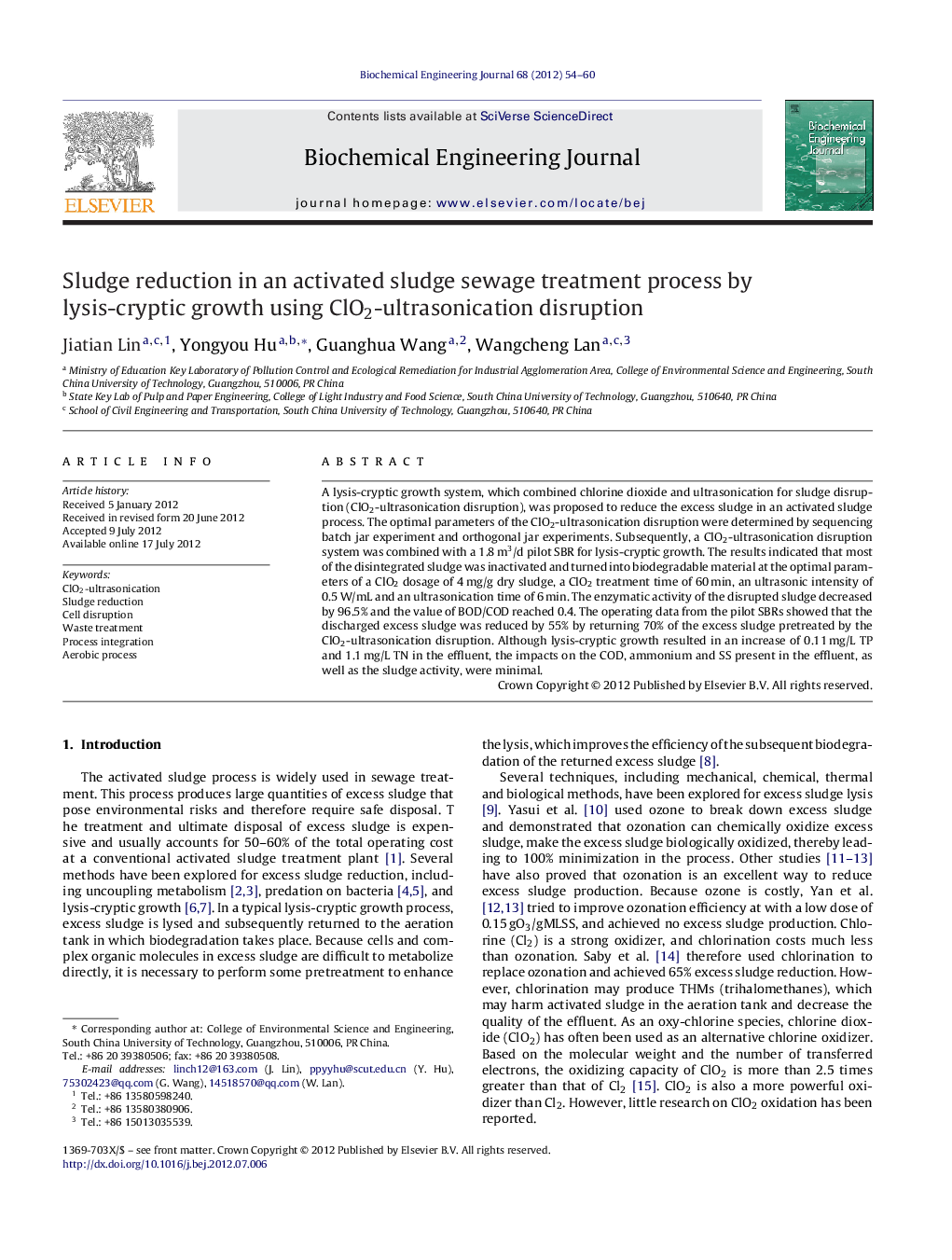| Article ID | Journal | Published Year | Pages | File Type |
|---|---|---|---|---|
| 3472 | Biochemical Engineering Journal | 2012 | 7 Pages |
A lysis-cryptic growth system, which combined chlorine dioxide and ultrasonication for sludge disruption (ClO2-ultrasonication disruption), was proposed to reduce the excess sludge in an activated sludge process. The optimal parameters of the ClO2-ultrasonication disruption were determined by sequencing batch jar experiment and orthogonal jar experiments. Subsequently, a ClO2-ultrasonication disruption system was combined with a 1.8 m3/d pilot SBR for lysis-cryptic growth. The results indicated that most of the disintegrated sludge was inactivated and turned into biodegradable material at the optimal parameters of a ClO2 dosage of 4 mg/g dry sludge, a ClO2 treatment time of 60 min, an ultrasonic intensity of 0.5 W/mL and an ultrasonication time of 6 min. The enzymatic activity of the disrupted sludge decreased by 96.5% and the value of BOD/COD reached 0.4. The operating data from the pilot SBRs showed that the discharged excess sludge was reduced by 55% by returning 70% of the excess sludge pretreated by the ClO2-ultrasonication disruption. Although lysis-cryptic growth resulted in an increase of 0.11 mg/L TP and 1.1 mg/L TN in the effluent, the impacts on the COD, ammonium and SS present in the effluent, as well as the sludge activity, were minimal.
► We coupled ClO2 and ultrasonic for sludge disruption and studied the optimal parameters of the ClO2-ultrasonic disruption. ► We revealed that lysis-cryptic growth using ClO2-ultrasonic disintegration result in considerable sludge reduction. ► We studied the effect of lysis-cryptic growth on effluent and sludge activity. ► We did economical evaluation for lysis-cryptic growth using ClO2-ultrasonic disruption.
